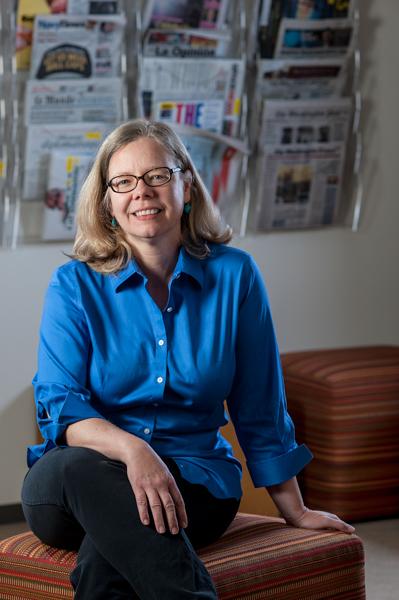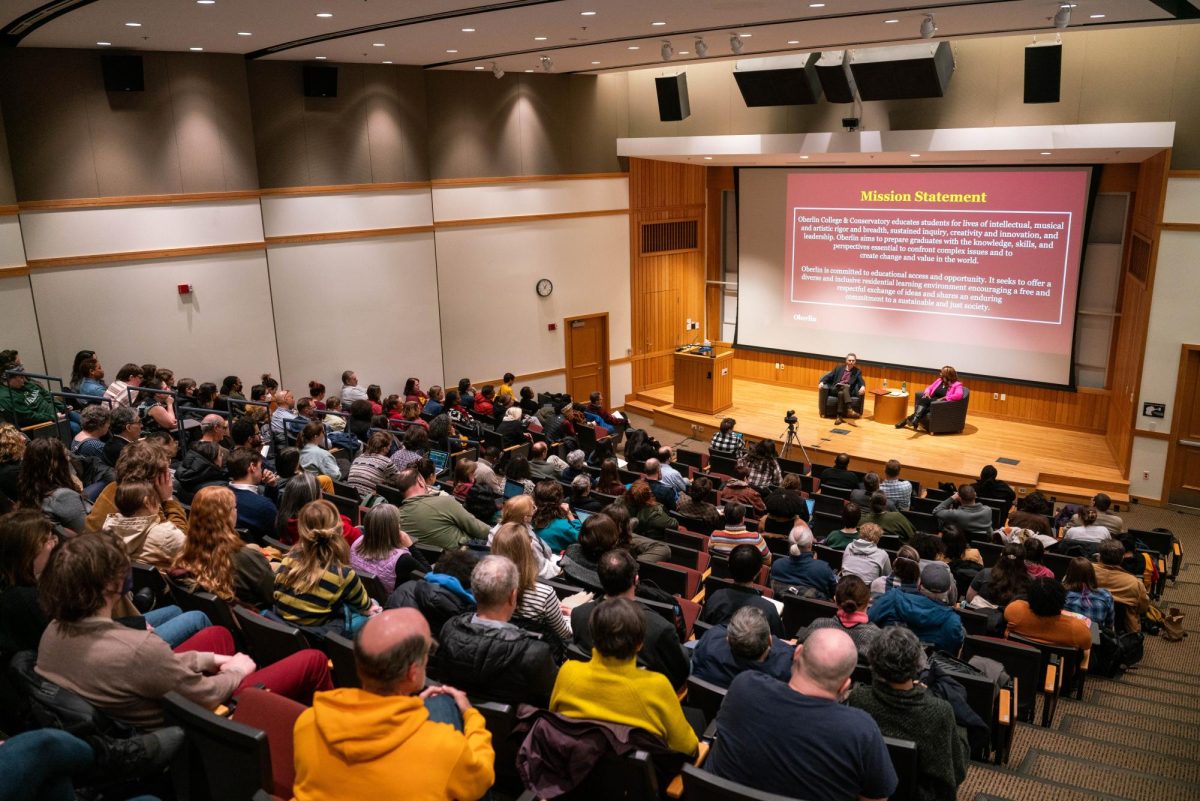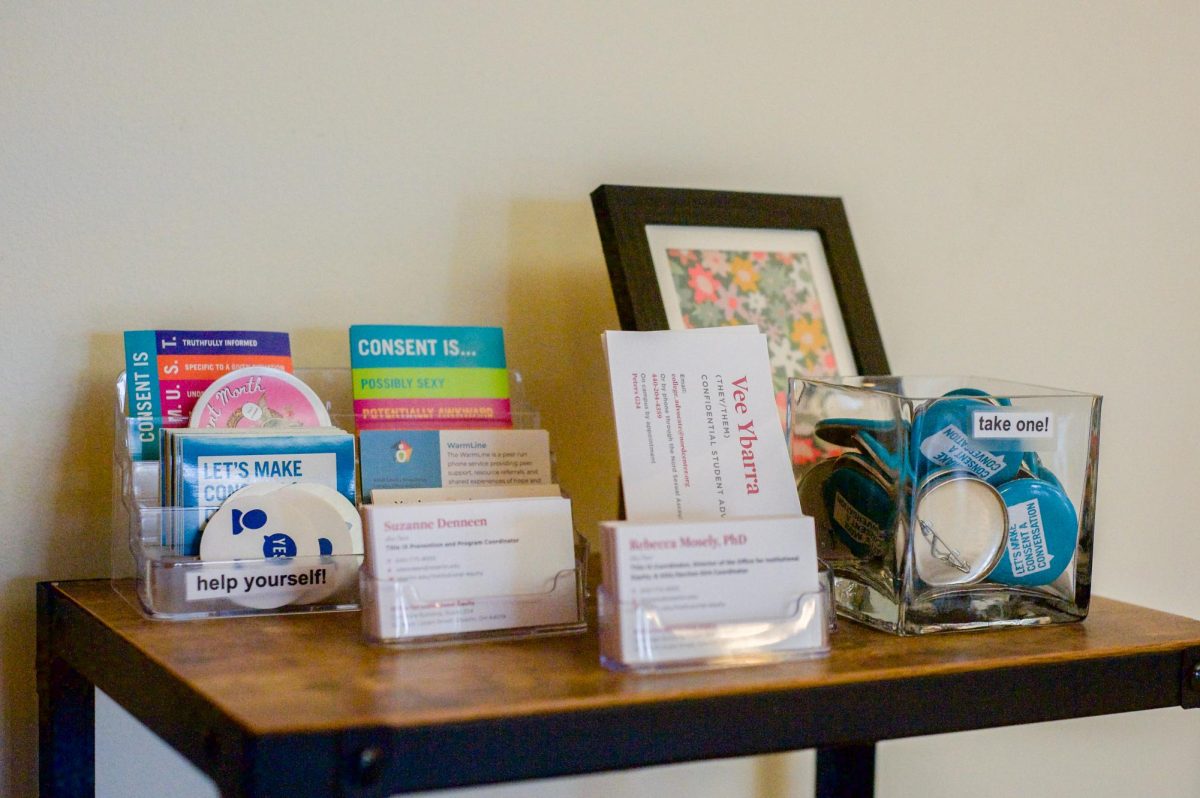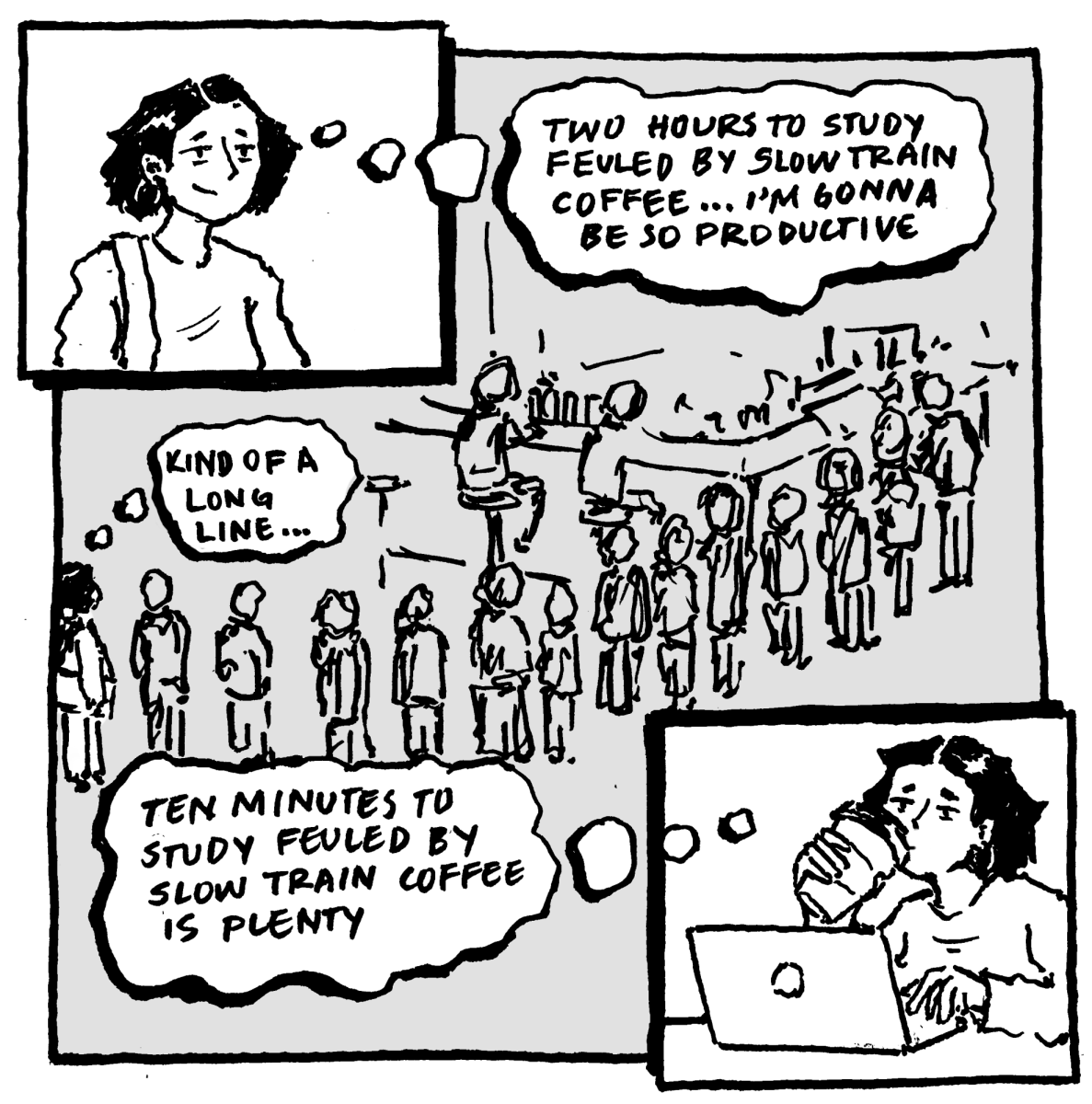Off the Cuff: Chloe Bird, RAND sociologist and professor

Chloe Bird, OC ’86, senior social scientist and professor at the Frederick S. Pardee RAND Graduate School, spoke about the gender gaps in quality of care for cardiovascular disease and diabetes at Oberlin last week.
September 25, 2015
Chloe Bird, OC ’86, is a senior sociologist at the RAND Corporation and professor at the Pardee RAND Graduate School who specializes in the differences in healthcare between women and men, particularly in regard to cardiovascular diseases and diabetes. She is also the editor-in-chief of the medical journal Women’s Health Issues. On Thursday, Sept. 17, she gave a talk in the King Building titled “Mapping Gender Gaps in Quality of Care for Cardiovascular Disease and Diabetes.”
What have you found in terms of the differences between men and women receiving care for cardiovascular diseases?
What we’re doing now is looking at quality of routine aspects of care for people who already are diagnosed with cardiovascular disease or diabetes, looking at gender — also racial, ethnic and socioeconomic — gaps in care. What we’re doing now that makes it different is we’re mapping it.
Starting in 1984, more women than men were dying of cardiovascular disease in this country, and it was a new and odd thing. When I was in school, they thought that once providers had trained enough new cohorts of physicians, that it would get addressed, and it didn’t. Then they thought, well, maybe women aren’t doing something right, and things weren’t getting addressed. We understood that the expensive, aggressive, heroic treatments didn’t necessarily work the same in women, such as moving a vein to replace an artery — different sized bodies, different issues. We knew that women had later onset, partially related to biological differences.
Until menopause, women had more flexible circulatory systems, which is, biologically, an advantage to be able to carry 20 percent more blood volume during pregnancy. Having a more flexible system means you’re at less of a risk of having high blood pressure, and high blood pressure doesn’t do as much damage. That ends fairly abruptly over the course of menopause.
Cardiovascular disease is somewhat different in men than [in] women. Men tend to have symptoms, especially with heart attacks, that are specific to a heart attack — that classic TV left-arm pain, chest pain. With women, it can be sudden, overwhelming anxiety — feeling like you’re getting the flu, neck pain or throat pain or jaw pain, feeling like you can’t breathe. Pretty much any pain that’s between your nose and your navel that increases on exertion and
decreases at rest could be cardiovascular, and you need to get it checked. But most of us think, “Oh, it goes away when I sit down.” We think about it [hurting] the way a muscle does. This is actually your warning that it’s bad.
In addition, men get blockage of the major vessels, so as a result, most of the screenings were set up to test men who had this thing that you could identify. In a man, there’s a 90 percent chance that if you don’t have a major vessel blockage or you don’t have a blockage of the valves, you’re not having major cardiovascular disease. In a woman, it’s 50-50, because women often get blockages in the small vessels of the heart; it’s called microvascular disease.
So we have something going on that’s different, in a population that’s different; you have differences in women and men’s lives and in presentation and in treatment. … We looked at care for diabetes and cardiovascular disease, and we looked at what was happening in terms of blood pressure and cholesterol and blood sugar, and we found gender gaps in screening, treatment and intermediate outcomes, meaning achieving control over these areas of documented physiologic deregulation.
We knew there was a problem with expensive treatments, these heroic and aggressive things, but here it was in inexpensive routine aspects of care. … 100 percent of people ought to be getting this care, and we showed that there were gaps. We did that; we published it in the journal of Women’s Health Issues along with a number of studies that were done after it that looked at the same problems, and ended up doing a congressional briefing with the American Heart Association on it. Academically, that was a big success. In terms of having an impact, virtually none. And so I spent a long time — the briefing was in 2008 — and I started looking at why that didn’t work. Our congress is a little more in the business of healthcare [now] than it was then, but we don’t legislate quality of care that way. They weren’t the best audience to talk to.
So what happened?
You would expect to see women doing better than men, but we were seeing women doing worse. So we had to think about what we could do with that that would be useful. My husband and collaborator in this work, Allen Fremont — we met the first day of graduate school — [is] an MD PH sociologist now. He’s been doing work mapping racial, ethnic and socioeconomic patterns in care. Mapping hasn’t been used a lot in healthcare. He’s used it to look at hotspots, gaps in quality, disparities in all kinds of different illnesses and healthcare around race and ethnicity. Because where we live is segregated to some extent in this country — not necessarily by law, but you live where you can afford to live — people tend to move between very largely similar places as a result. You’re mapping socioeconomic patterns —you’re mapping race and ethnicity, and when you find a hotspot, there are demographic characteristics of who lives there on average.
What do you mean by hotspot?
A place where there’s a high rate of asthma or asthma exacerbations — that sort of hotspot. We tend to map them in red so you can see where there are problems or gaps. … We never used that to map gender differences in care because we live in the same places. And I realized: How do you get a message out there when it’s about a huge area? Or how do you get decision-makers to think about the problem as relevant to them? It was so surprising that you were seeing a gap in women not getting as good care, that a lot of people either thought that it’s not really a big problem or those other health plans have a problem, those other providers, those other provider groups, but we probably don’t have a problem. So to get people to understand and engage, we started mapping care … and we looked at patterns across the state instead of just looking at the average. On average [the] gap is just five percentage points on cholesterol screenings. But when you map it, in seven of the eight areas used in California to look at quality, there was worse care for women than for men. In three of them it was a five to 10 percentage point gap.
Now we’re doing work with a national healthcare plan looking at four metropolitan healthcare regions across the country and mapping the gaps that they see in care. They’re coming to us — it’s not me trying to get data to write an article that’s measuring a problem to get people to pay attention to it; [these are] the people who do the data analytics for the health plan. They’re saying we want to understand it — we want to use it to improve care. Insurers don’t have a lot of tools — they have payment, but they’re not the ones providing the care. But they do provide a lot of services that may give somebody access to free diet support [and] a range of behavioral health things.
What we’re seeing is that not only is there variation around the country and in different areas, much bigger than the racial gaps, but that it’s not caught by either measures of who’s a high utilizer, who has a complicated case — all these things that wouldn’t be a justification for not meeting guidelines, but might have been an explanation that would have given us leverage on it. … And then they looked at the algorithms they use to tap who gets contacted for these other kinds of behavioral health support — things they do to improve quality of care. And what they’re seeing is that women, and especially younger women, were not always getting picked up. … So instead of me going to them saying, “You’ve got to do something,” they’re saying, “We could go back and tweak these [things] and try to capture [them] so that these people get flagged.”
What we may have is that not only are women not thinking of themselves as having this risk, but providers — not all providers, not all of the time, but on average — are not being as aggressive in prevention or secondary prevention in women. But the algorithms that are designed to sweep people into better care, to help notify them of what to do have incorporated some of that clinical bias. So we have an opportunity to switch some of the levers, to work to change something about how health care is getting delivered. … It’s really exciting to do work that’s both rewarding and interesting, and goes beyond describing the problem and instead is saying, “Here’s some things that could be done.”






















